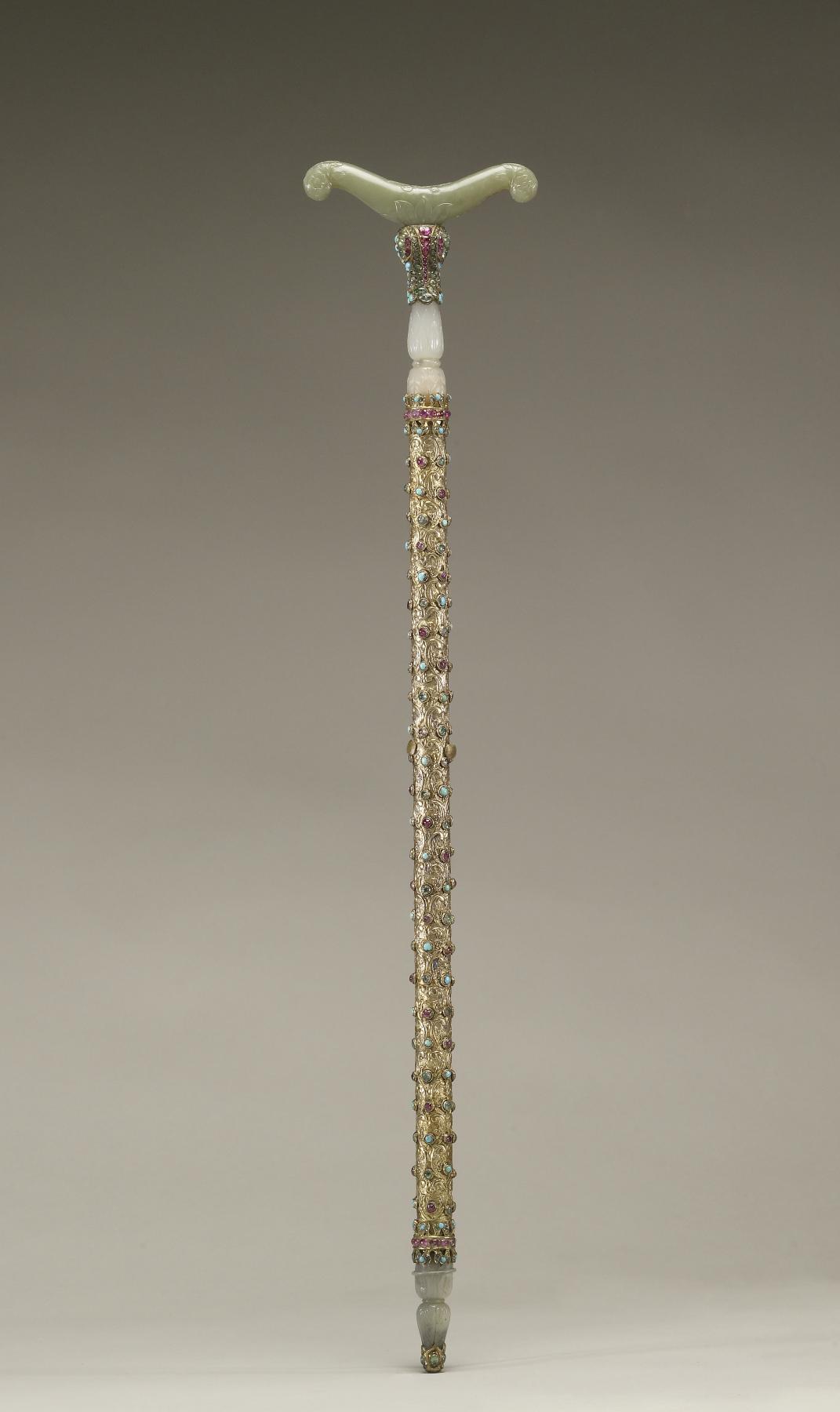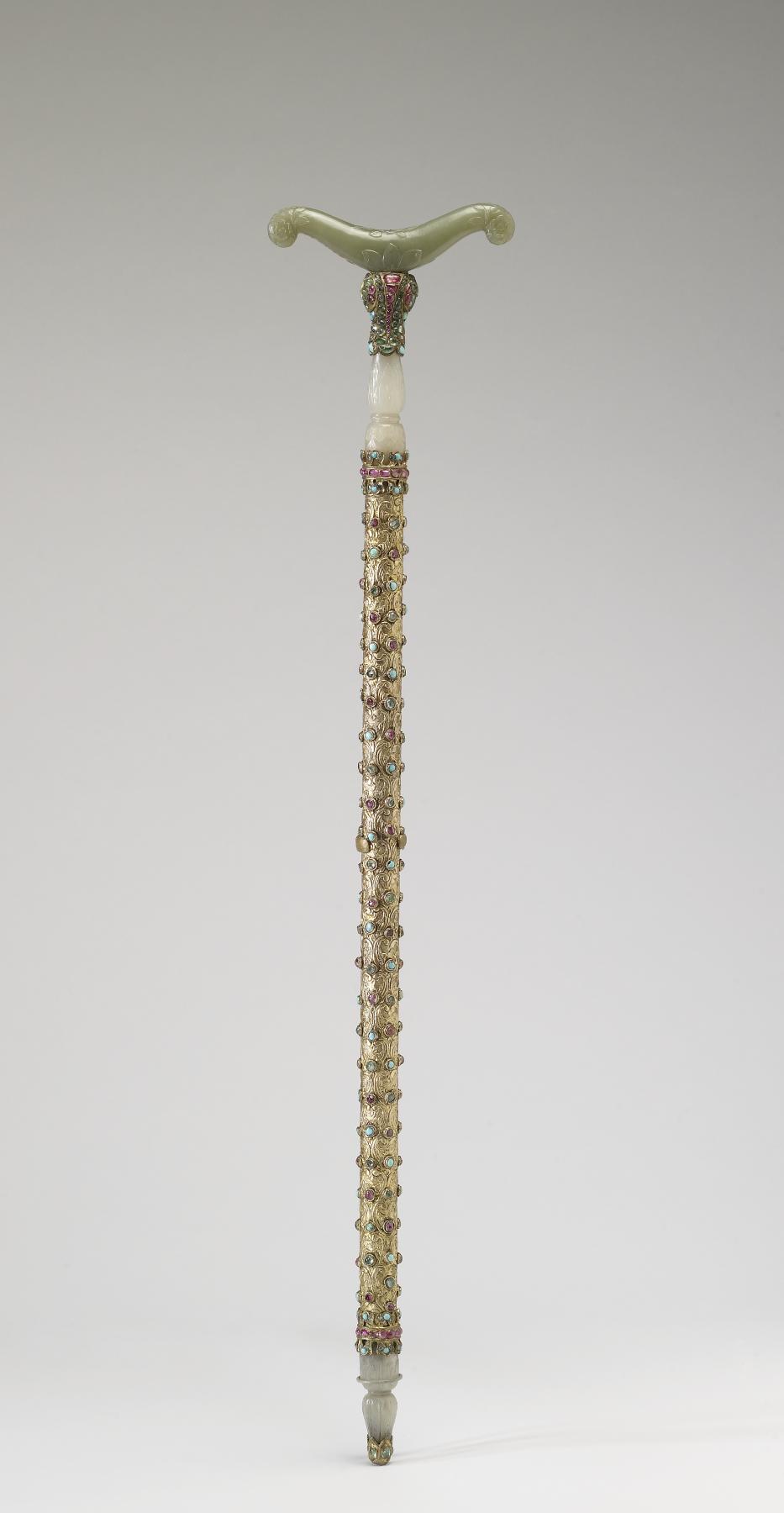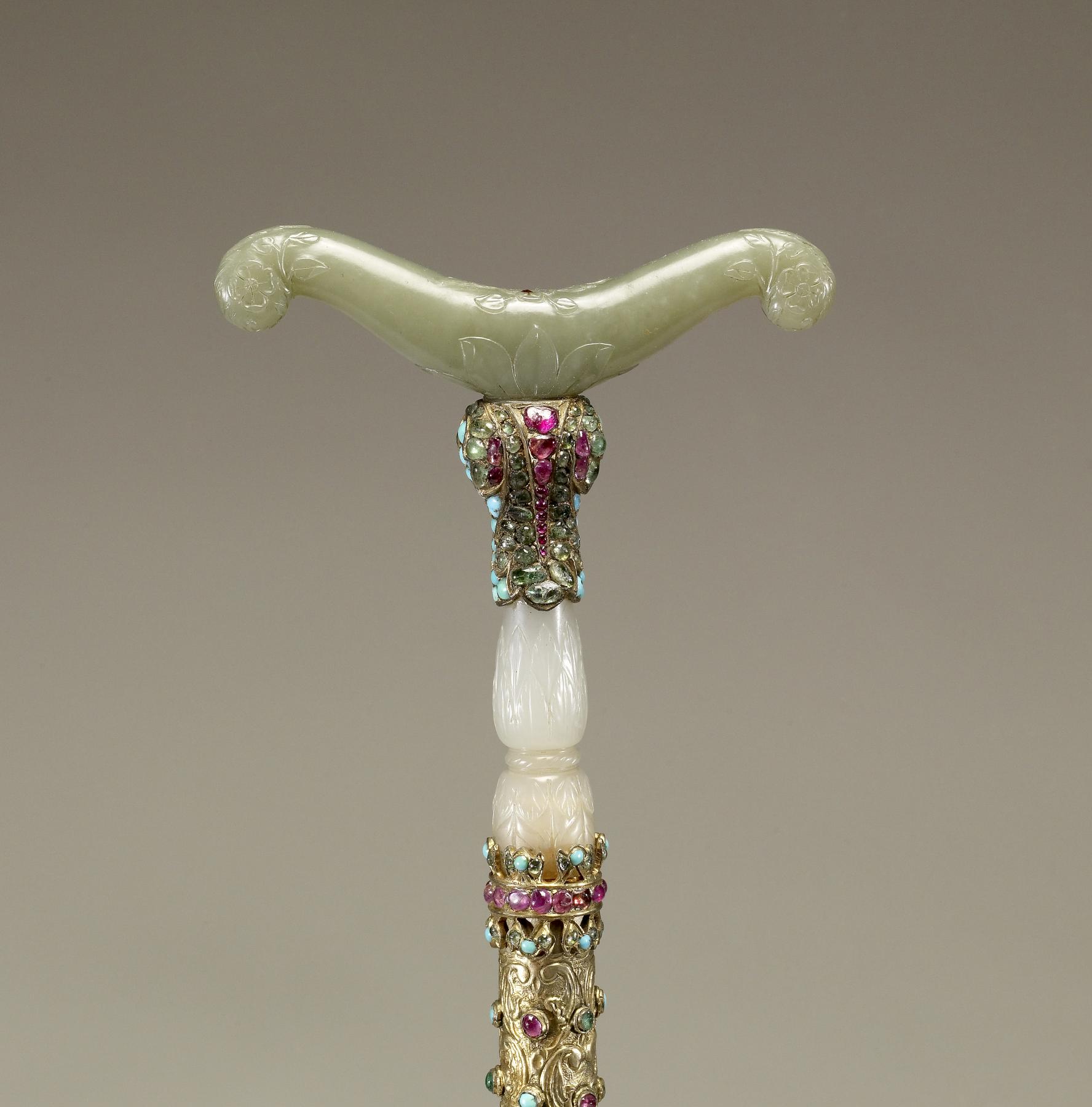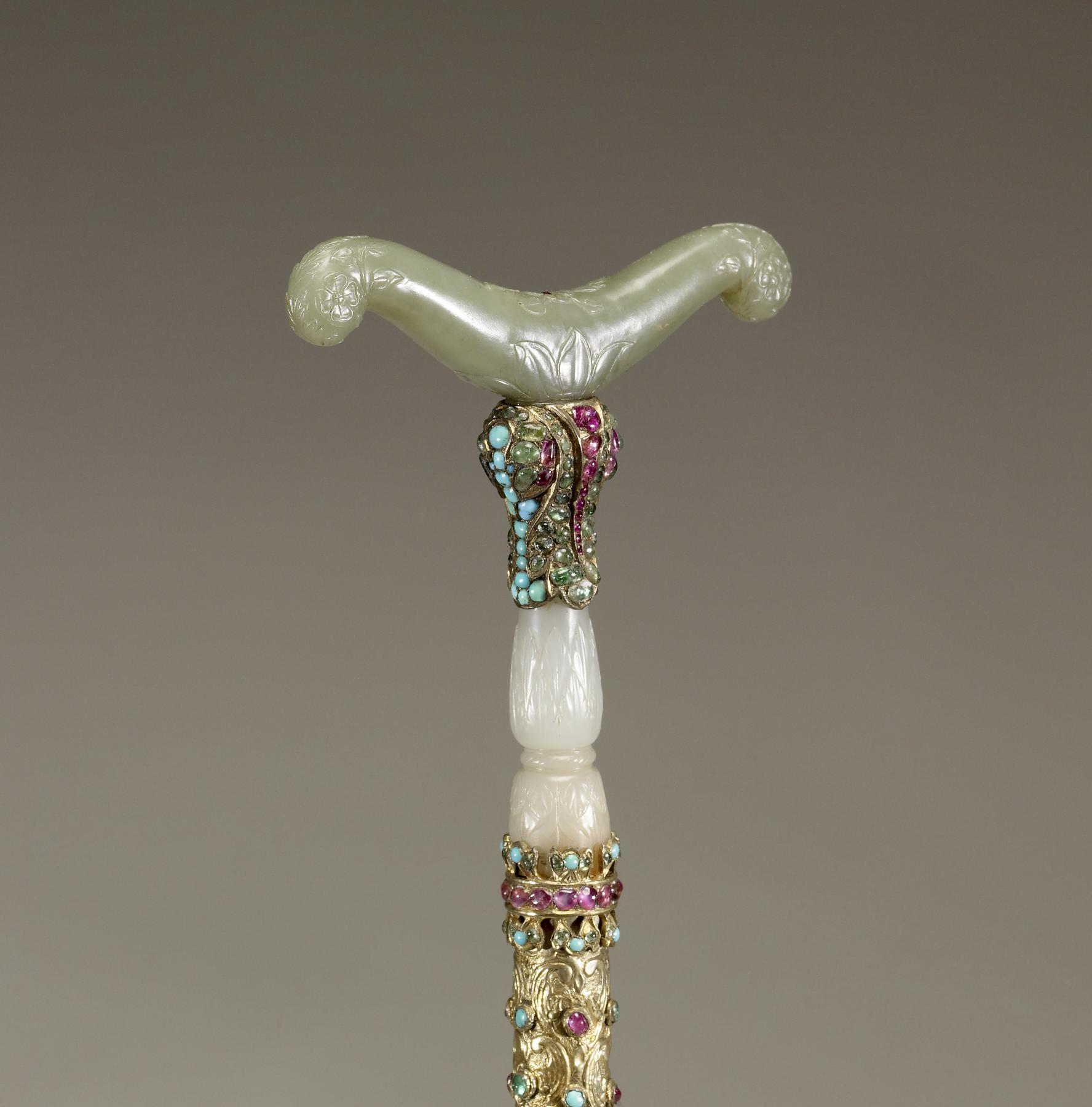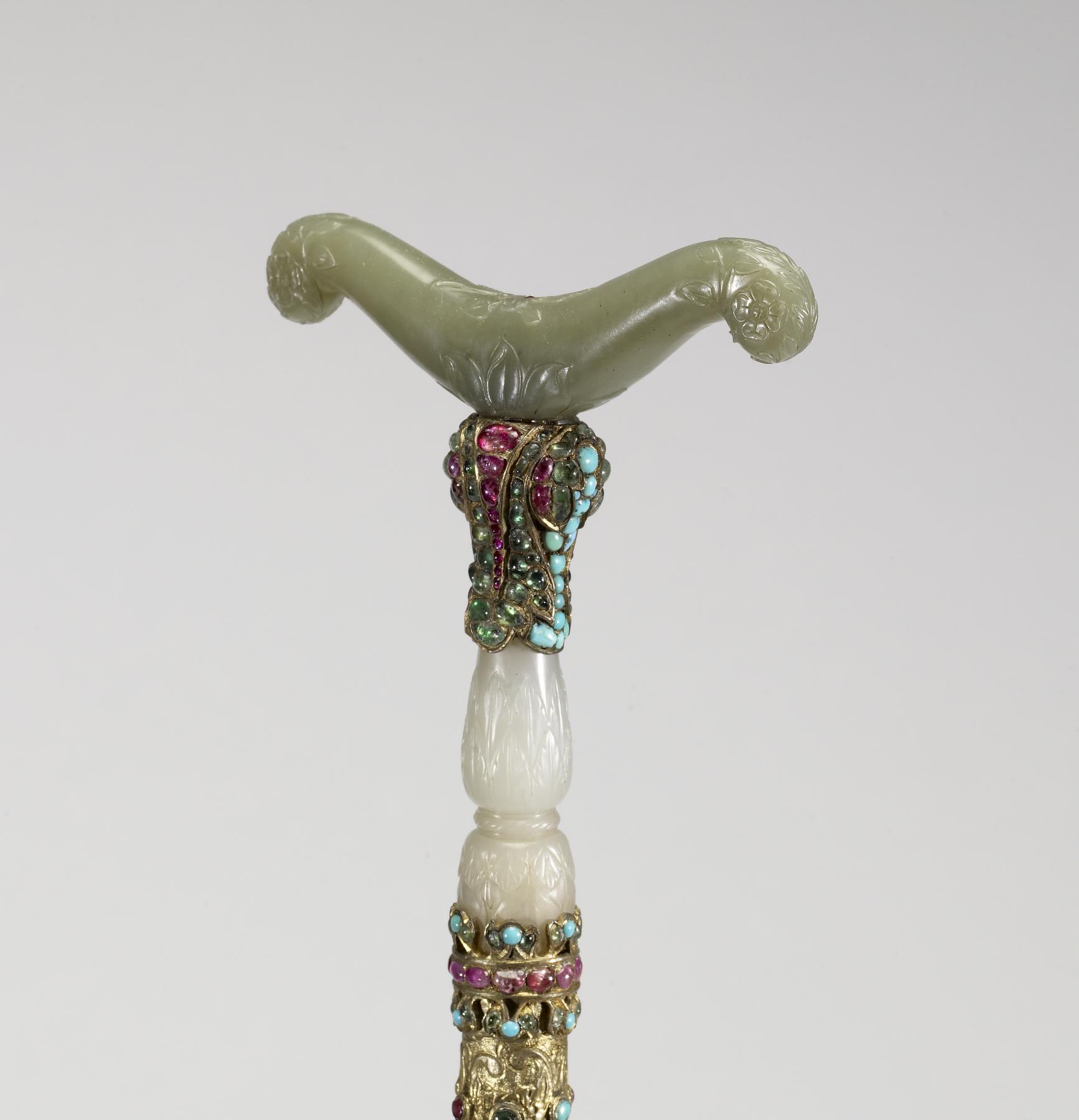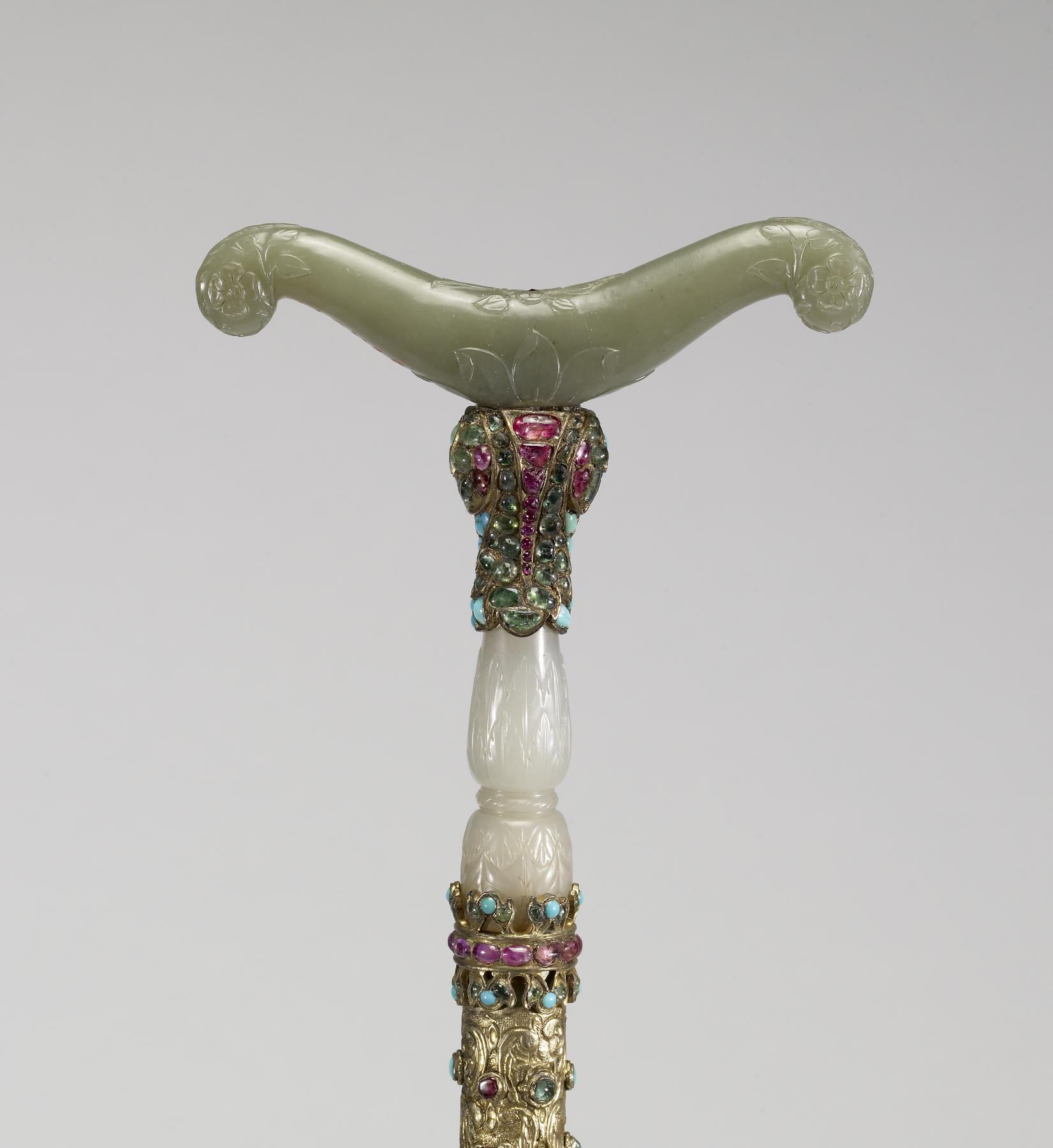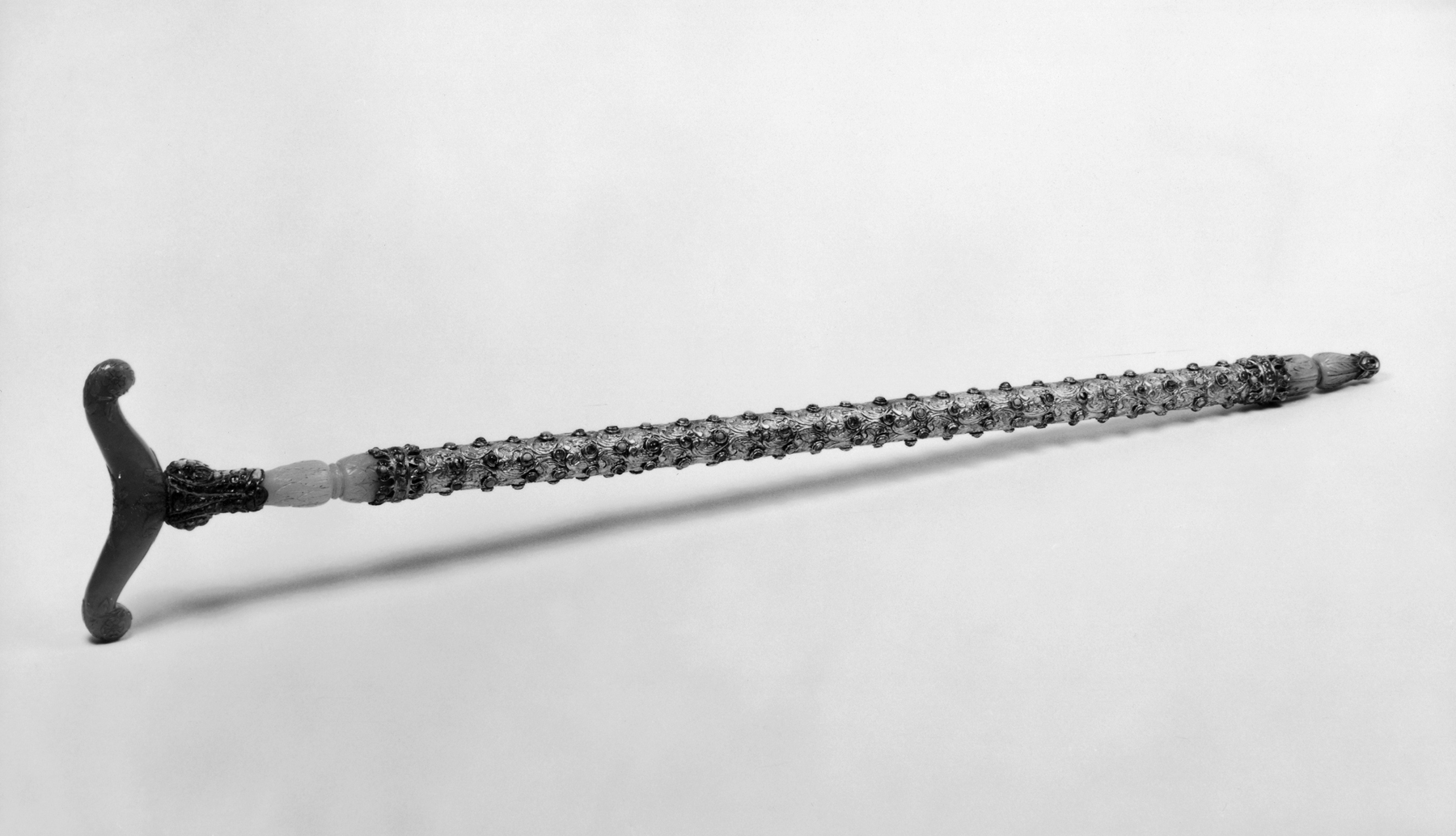Baton with Jade Finial
(Islamic World )
This is a composite object, consisting of a shaft, bejeweled with semiprecious stones, including turquoise, and a Mughal Indian jade finial. The finial was attached at some point in the object’s history, either while the object was in the Ottoman treasury or later, when it came into the hands of Robert S. Pardo, who sold the piece to Henry Walters (1848–1931). Pardo describes this unusual object as a scepter; however, it iis in the form of a meditation stick/crutch, although the suptuous materials appear to make it similar in purpose to maces, swords, and daggers, which were held or worn to indicate the wealth and authority of their owners.
Provenance
Provenance (from the French provenir, 'to come from/forth') is the chronology of the ownership, custody, or location of a historical object. Learn more about provenance at the Walters.
Robert S. Pardo, Istanbul; purchased by Henry Walters, Baltimore, 1903; by bequest to Walters Art Museum, 1931.
Exhibitions
| 2015-2016 | Pearls on a String: Artists, Patrons, and Poets at the Great Islamic Courts. The Walters Art Museum, Baltimore; Asian Art Museum, San Francisco. |
Conservation
| Date | Description | Narrative |
|---|---|---|
| 2/28/1962 | Treatment | cleaned; repaired |
| 7/1/1981 | Treatment | cleaned; examined for condition |
Geographies
Turkey
(Place of Origin)
India (Place of Origin)
Measurements
H: 22 13/16 x W: 4 7/16 x D: 7/8 in. (58 x 11.3 x 2.3 cm)
Credit Line
Acquired by Henry Walters, 1903
Accession Number
In libraries, galleries, museums, and archives, an accession number is a unique identifier assigned to each object in the collection.
In libraries, galleries, museums, and archives, an accession number is a unique identifier assigned to each object in the collection.
57.1577

